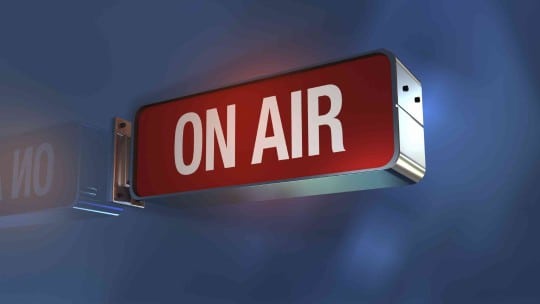

While broadcast interviews can make even the most sophisticated executives uneasy, they offer a unique opportunity to deliver messages to a wide audience quickly and simultaneously. As with every opportunity, broadcast comes with its commensurate challenges. With the right preparation and approach, every executive can be an effective communicator, even in the relatively unforgiving environment that TV and radio represent.
Since television, specifically, is a visual medium, the client’s physical demeanor and the style of his or her presentation are just as important—if not more so—than what he or she says. In addition, the rise of sound-bite journalism—the packaging of information in shorter and shorter bits—makes it imperative to be opportunistic, delivering messages succinctly and clearly in every exchange on the air.
Based on this, the focus of executive preparation needs to be: 1) message development, 2) packaging and 3) demeanor. Your job as a PR pro is to ensure that the client exudes confidence, control and credibility during the interview and leaves the audience believing in his or her messages.
Basic Groundwork
Just as in any interview situation, you need to ask basic questions to ensure you understand the context:
- What type of program is this?
- Who is the primary audience?
- Is the journalist knowledgeable? Does he or she have an apparent bias?
- Is anyone else being interviewed?
- Where does our story fit overall?
- What is the interview format?
- Live/taped
- Edited/unedited
- In-studio or talk show
- On-location or remote
With the answers to these questions, you are in a good position to decide what positive messages can be communicated about the company, product or issue.
Defining the Messages
Broadcast interviews typically are brief, so there is a limited amount of time to deliver messages. Understanding the context, pick two or three that will resonate with the journalist and audience; focus on refining and packaging these “message points” that can be reiterated by the spokesperson during the interview. When developing the messages, think like a trial lawyer and provide your spokesperson with proof points so he or she can back up any assertions made. Some executives want to participate in the crafting of messages, but either way, your job is to ensure that the messages are concise, credible, defensible and memorable.
Anticipating Questions
Executives, like many of us, feel most comfortable when they are prepared. Your strategy must include anticipating a reporter’s questions, both basic and unexpected. Develop a Q&A document that includes hostile or difficult questions with answers that incorporate key messages. It’s better to be over-prepared than caught off guard. The Q&A document can be repurposed for other spokespeople and will be the foundation of the next step in the prep: practice and role-playing.
Practice…Practice…Practice…
Nothing beats practice to prepare for a broadcast interview. Using the Q&A document as a guide, run through all possible questions and refine the answers with your executive until he or she is comfortable with the responses. Through this process, you can determine whether: the messages are being communicated; the responses are concise enough; and the proof points are strong enough.
Remember to encourage your spokesperson to practice a technique called bridging and blocking. This is a way of steering the interview to your agenda by using phrases like “the real issue here is…” and “that’s an interesting question, but let’s put it in perspective…” Headlining (making a key point first) is especially effective in the sound-bite world of broadcast. Underscore main points with phrases like “it all boils down to two things…” or “the bottom line is…”
As part of the practice session, it can be extremely helpful to watch videos of successful and unsuccessful broadcast interviews. YouTube is full of examples of executives and celebrities navigating the broadcast waters while being peppered with friendly and not-so-friendly questions from journalists. It is worth the time to build a small library of videos that illustrate the best techniques to employ when being interviewed and to learn from the mistakes of those who didn’t know or forgot the rules.
Fighting Stage Fright
It’s normal to be nervous before a broadcast interview. The accompanying adrenaline rush can help executives stay alert. While being fully prepared can go a long way in instilling confidence and reducing nerves, there are a few tips to manage executive jitters:
- Arrive early to get accustomed to the surroundings.
- Think positively and visualize a successful outcome.
- Focus on the interview as a conversation with the host or reporter rather than the larger audience.
- Reflect on the preparation. This will help your executive maintain control and make it his or her interview as much as the reporter’s.
Broadcast interviews offer executives an unmatched opportunity to connect with audiences and deliver key messages while engaging in a dialogue in a polished manner that positively positions both them and their brand. By working with them to create compelling messages and practicing so that their presence is authoritative and professional, you will add tremendous value to the broadcast experience.
CONTACT: [email protected]
Tips and Tricks for a Successful Broadcast Interview
Dress:
- Dress conservatively. For men, a dark suit and blue shirt. Avoid loud ties or ties with small patterns. For women, wear a dark outfit in solid colors.
- Don’t wear white on camera.
- Men should unbutton their suit jacket while seated, button it when standing. Sitting on the back of the suit jacket will help create a wrinkle-free line.
- Most studios are cold until lights are on. Then they become quite warm. Mid-weight clothing is the best choice.
- Don’t wear large, shiny or noisy jewelry.\
- Wear contact lenses, instead of glasses. If you wear glasses, non-reflective lenses are best. Avoid light-sensitive glasses.
- If offered makeup, accept it. Men should consider shaving close to airtime. Women should apply a matte finish to avoid a shiny face, with blush and eye makeup only slightly heavier than normal.
Before the Interview:
- Arriving early will allow you to participate in lighting and sound checks.
- Typically, a pre-interview precedes the on-camera interview. This allows you to assess the interviewer, and mention topic(s) you’d like to discuss. Often the pre-interview can help set the tone for the interview.
- A technician may clip a lavalier microphone to your jacket. Speak naturally, and avoid brushing your hand or clothing against the microphone. Women should remove necklaces likely to swing against the microphone.
- If a technician asks you to test the sound level by speaking, speak at your normal level and say something innocuous (e.g., talk about the weather, recite a poem). Don’t try to be funny, or say anything off-color or controversial.
Body Language:
- If seated, sit erect but not ramrod-straight, and slightly forward or toward the interviewer.
- If standing, do so with arms at the side or one hand in a pocket. Planting one foot slightly in front of the other will help you avoid swaying.
- Should you gesture, do so naturally, not expansively. Keep gestures small and in front of you, and avoid sudden body movement.
- Make your expression match your words. Smile if appropriate. Keep a mildly pleasant expression at all times; an expression that looks neutral off camera seems unhappy or angry on camera, so a pleasant face may feel unnaturally smiley. Practice in a mirror.
- Lean forward slightly. Modulate your voice to when making key points.
- Avoid obvious signs of discomfort or nervousness, e.g., foot tapping, clenched fists, shifting back and forth.
- Don’t nod your head to indicate that you understand or are ready to answer the question. Inadvertently, this may convey agreement with the questioner’s premise. Remain neutral and become animated only when you begin to speak.
During the Interview:
- Make punchy and concise statements; put your most important message up front; talk to the interviewer or guests, not the camera; breaking eye contact by staring off into space or looking at the ground will make you appear shifty; stay attentive when others are speaking; if it is a remote interview—the reporter is offsite asking you questions through an ear piece—look directly at the camera at all times; try to avoid being distracted by activity around you in the studio, keep focused on the interviewer; don’t overlap the reporter’s questions, wait until the question is finished to begin your answer; hold your interview attitude until the interview is over and the camera is off.
NOTE: This content appeared originally in PR News, May, 16, 2016. For subscription information, please visit: http://www.prnewsonline.com/about/info
CONTACT: [email protected]
